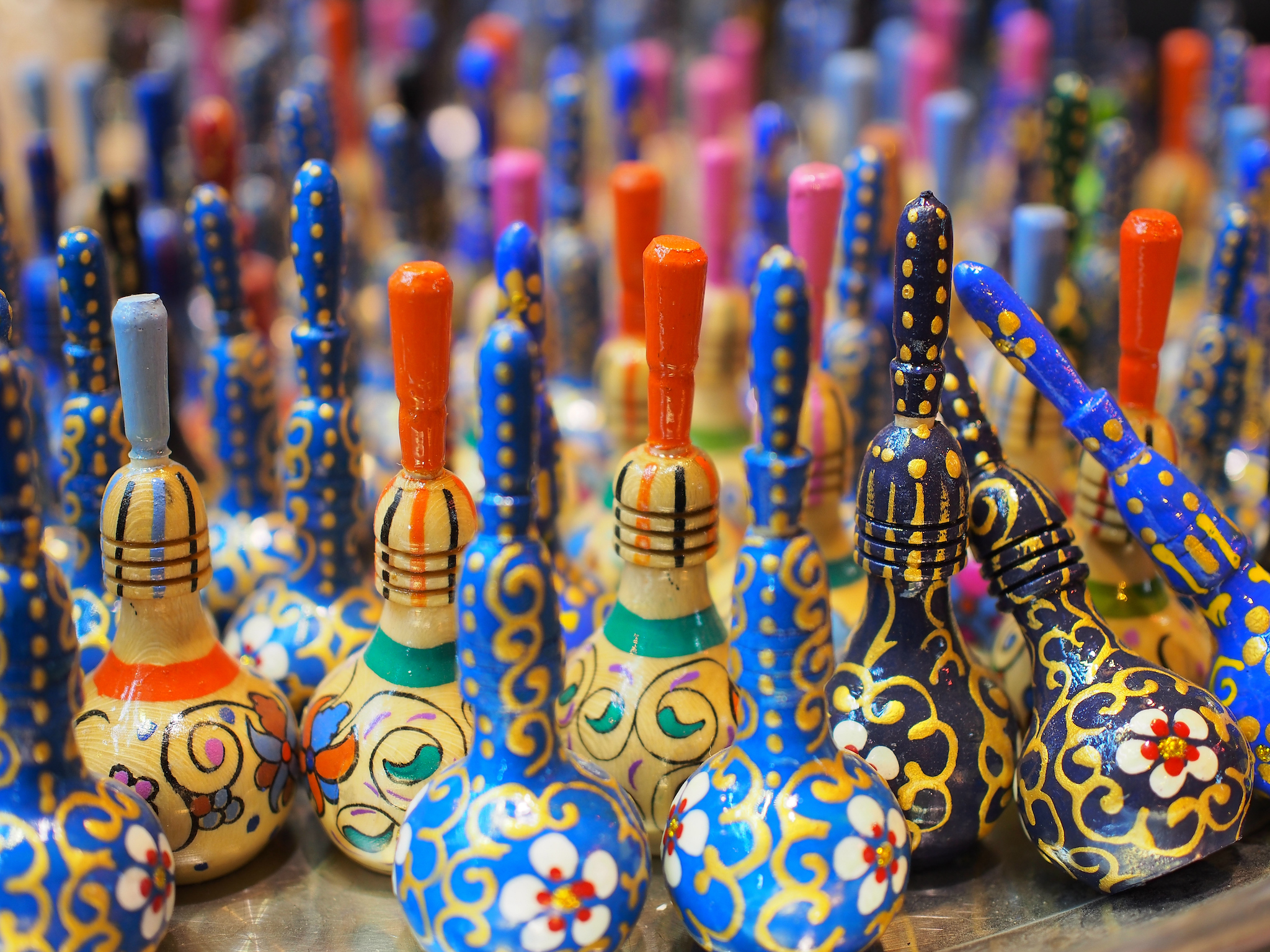
Eyeliner has been a mainstay in the Western makeup kit for decades. The beauty staple is ubiquitous in our cultural landscape; this year alone, it was at the forefront of countless trends flaunted on runways, film, television, and especially on TikTok and Instagram. Yet, in Iran, the use of sormeh, a loose black powder with roots in Ancient Persia, has endured for centuries—despite the rising popularity of eyeliner.
[time-brightcove not-tgx=”true”]Beyond being a potent beautifier for the eyes of many Iranian women, including those in the diaspora, the pigment carries great nostalgic and symbolic meaning, connecting them to their heritage and ancestral traditions. Amid the heightened scrutiny of women’s appearances in the country, whereby the morality police has stepped up its enforcement of the hijab law, sormeh offers a nuanced exploration of makeup’s role in the Islamic Republic, not only as a beautifier, but also as a symbol of self-expression and identity.
Sormeh’s recipes date back at least two millennia; wearing the cosmetic in Ancient Persia was a cultural norm for both men and women. Historically, the preparation of sormeh involved the grinding of various stones, with the resulting fine powder soon after being poured into a vial.
People in Iran have long turned to sormeh for reasons that transcend beautification. The dark makeup was used to protect the eyes from harsh weather, to ward off evil spirits, to strengthen the eyelashes, and for medicinal purposes. Sormeh also denoted a woman’s marital status, and so, in some ways, it served as a marker of womanhood. Using sormeh was common for most, from nomads and tribe members to urban and rural women. Throughout the Qajar period, after bathing, many court women would incorporate sormeh into their self-care routines along with henna.

Sormeh’s historical significance is evident in Persian literature, poetry, and art, with Ancient Elamite sculptures featuring eyes adorned with the pigment. Some Persian myths even endowed sormeh with magical properties. In one such tale, “Soleimani’s sormeh” was said to give people the power to discover the world’s secrets. Meanwhile, “stealth sormeh” allegedly made its wearers invisible.
Beyond its role in ancient Persian tales and rituals, sormeh’s relevance also originates in religious practices. The pigment is broadly recognized as halal, or permissible, in Muslim countries, provided it is used without the intention of drawing attention. This belief stems from the Prophet Muhammad’s reported use of ithmid, a form of sormeh, both medicinally and for ornamentation—he recommended others use it, too.
The Shi’a Imams Ja’far al-Sadiq and Imam Mohammad al-Baqir also advocated for its benefits, including eyelash growth, the polishing of the eyes, and even improved breath. According to one Islamic narration by Abu Hurairah, a companion of the prophet Muhammad, those who enter paradise will be gifted with eternal youth, no body hair, clothes that don’t wear out—and sormeh for their eyelids.
While the historical and religious resonance of sormeh is undeniable, its role in the contemporary beauty landscape of Iran is equally compelling. Given the strict regulations on women’s appearance in the Islamic Republic and limited avenues for self-expression today, adorning one’s face—particularly the eyes—takes on outsize importance.
Read More: What the Return of the ‘Morality Police’ Means for Iran’s Women
“The majority of Iranian women’s self-expression is right here on their faces, because most of the rest of their body is covered,” says Shirin Neshat, a Brooklyn-based artist and director who moved to the U.S. shortly before the 1979 Islamic Revolution. “So they treat their faces very differently than a woman in any other part of the world. And your identity is defined right here in your eyes, your lips, your skin, and your gaze.”
Iranian women have creatively and consistently turned to cosmetics, especially lipstick, nail polish, eyeliner, and sormeh, to express their individuality for decades. Women in the country spend $2.1 billion annually on beauty products, making Iran the second-biggest consumer in the region after Saudi Arabia, per 2016 data from the Iranian Association of Cosmetics, Toiletries, and Perfumery Importers.
Though younger generations in Iran are increasingly drawn to international eyeliner brands both authentic and counterfeit, the legacy of sormeh lingers. The entry of these brands and other new eye cosmetics into the market has impacted sormeh’s appeal; in demand were Western products like Maybelline and Revlon, which were easier to apply, but harder to acquire. That said, local businesses are capitalizing on the void left by multinational companies (due to trade barriers), drawing inspiration from traditional cosmetics to strike a balance between the modern and the conventional.
“Iran is a very classist society, and as a result, many middle and upper-class Iranian women no longer rely on sormeh because it’s seen as traditional and not trendy and modern like liquid or pencil eyeliner,” Holly Dagres, a senior fellow at the Atlantic Council specializing in Iran, says.
Regardless of this shift, the historical practices associated with sormeh still reverberate in the memories of older generations of urban Iranian women. Ketayoun Nejad Tahari, a 61-year-old Tehran-based hairdresser, fondly recalls her experiences with sormeh, highlighting its ability to thicken the eyelashes. She traces her first memory of wearing the dark powder back to when she was 15—after applying it, she stood in front of a mirror to study herself. “I had changed a lot. I liked myself a lot; I will never forget that I thought I had become beautiful,” she reflected.
While in Iran, the allure of sormeh might have faced challenges, for many in the diaspora, it remains a poignant link to their homeland and heritage. Neshat wears heavy lines of liquid eyeliner that extend towards her eyebrows’ edges. Though she insists her style draws from her time in both the U.S. and Iran, it is clear that her earliest explorations of eye makeup were influenced by her teenage years in her homeland, when she was surrounded by sisters and a mother who lined their eyes with sormeh that they made at home by burning almonds and moistening the ashes.
Today, she refrains from using sormeh as she says it smears easily and sometimes itches her eyes. But she wore it for years as a young woman in Iran and still has some stored in an ornate pot in her arsenal of makeup products—a nostalgic reminder of her aesthetic roots. “There’s an ancient past behind me and there are roots behind me that I still belong to. Yet I’m here, and I’m with you, and I’m modern,” she tells me of her eyeliner aesthetic.
Sormeh’s influence in Iran stands as a testament to its cultural significance. From its ancient roots as a protective and beautifying agent to its continued use in pockets of modern Iranian society, sormeh is more than just a cosmetic: it’s a bridge connecting generations of women to their ancestors. Sormeh’s journey from ancient Persia to the beauty kits of the Iranian diaspora underscores its undying place in Iranian identity. While contemporary styles shift with tastes, the legacy of sormeh persists as a proud pillar of Iranian heritage.
From EYELINER by Zahra Hankir, published by Penguin Books, an imprint of Penguin Publishing Group, a division of Penguin Random House, LLC. Copyright © 2023 by Zahra Hankir.

























